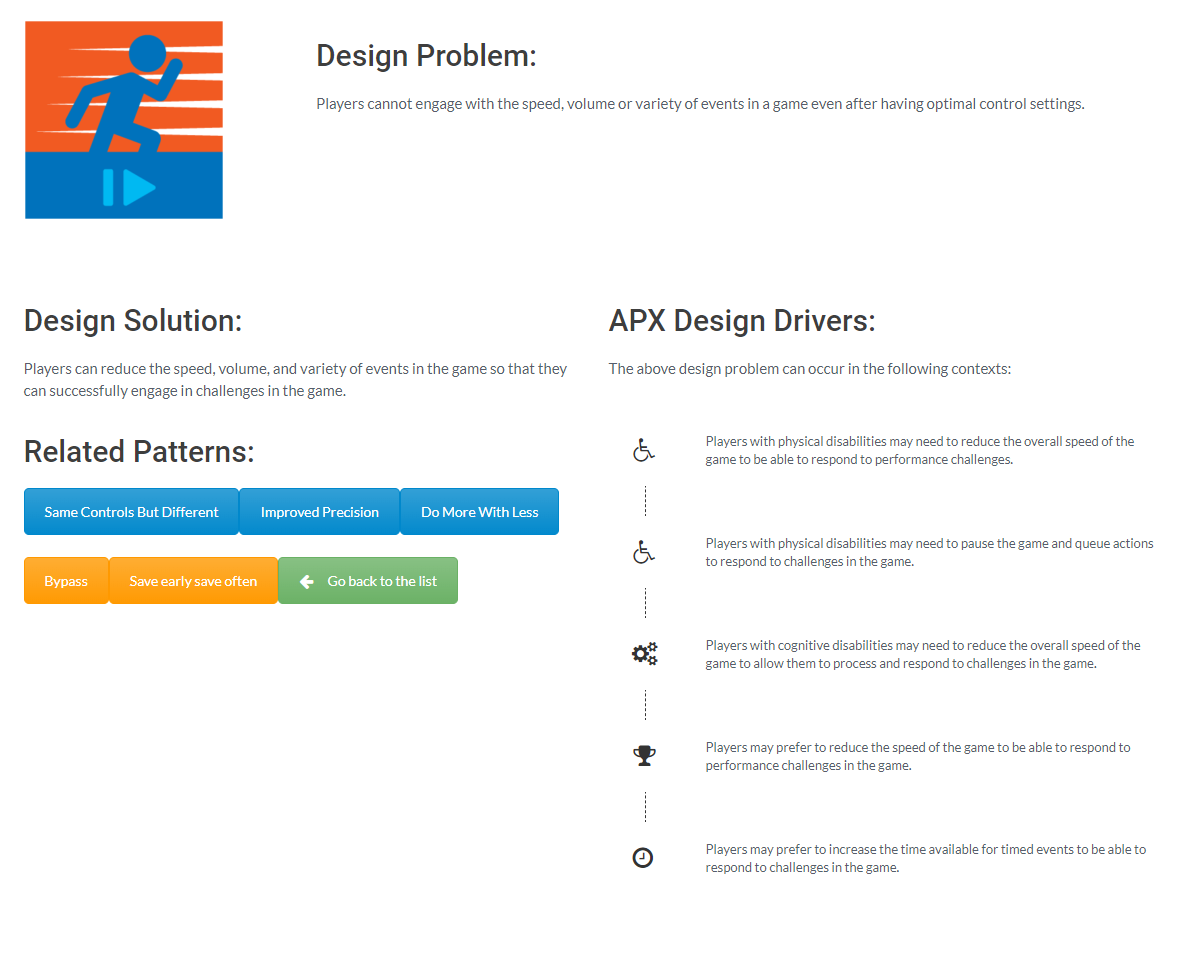Superhero VR is a game for the Oculus Rift for disabled gamers that makes full use of head-tracking to provide an accessible experience even for the fully quadraplegic. I did story, core game design, and accessibility research that helped result in the Canadian government funding the project for 2 million dollars. My primary research was on guidelines written by disabled gamer groups on how to design games accessible to their community as well as on the custom controllers and different input methods they use to interact with games.
I also made a prototype of one of the superpower scenarios we developed in Unreal Engine 4 using visual scripting. The project is still in development.
An example of accessibility guidelines from AbleGamers:

The Time Control superpower I came up with for the first prototyping phase directly adresses these usability/accessibility concerns with consideration for hardware/engineering constraints and fun.
“15. Time Control - Player can stop, slow, speed-up, and rewind time.
Positives:
Stop and slow can help people process information/plan. Rewind is especially useful from an accessibility perspective, allowing players the chance to quickly try and re-try actions that are difficult until they succeed.
Negatives:
Can make some things too easy, depending on player (stop time especially) might need to be limited access.“
